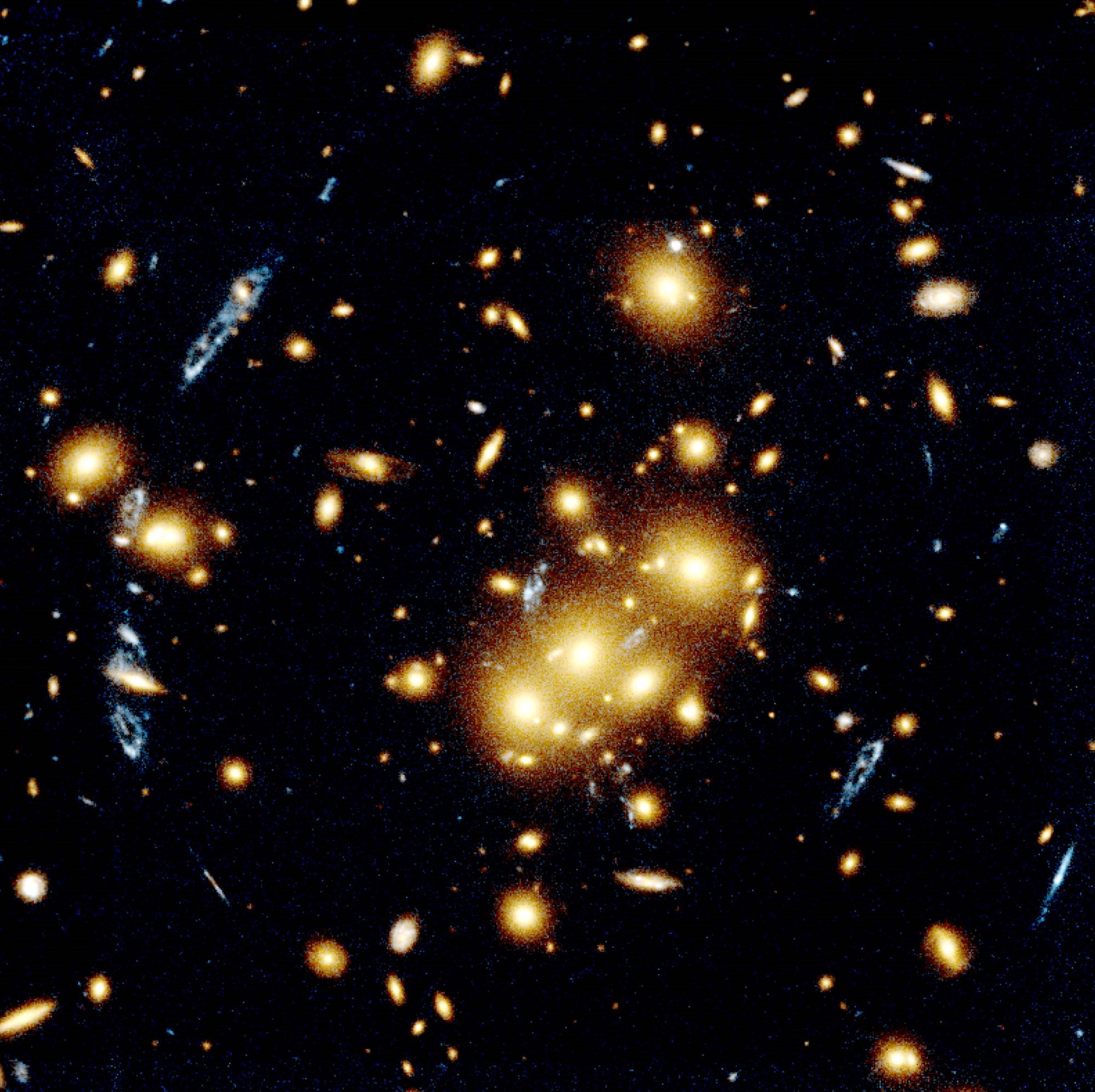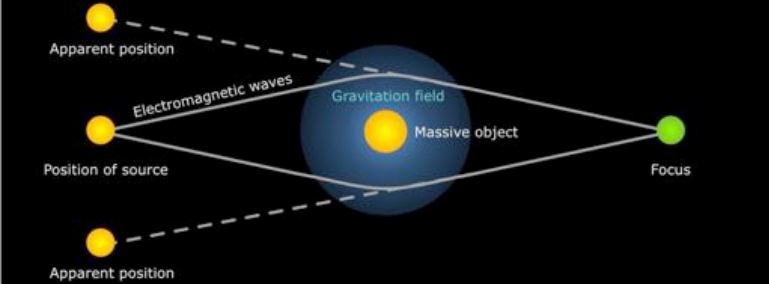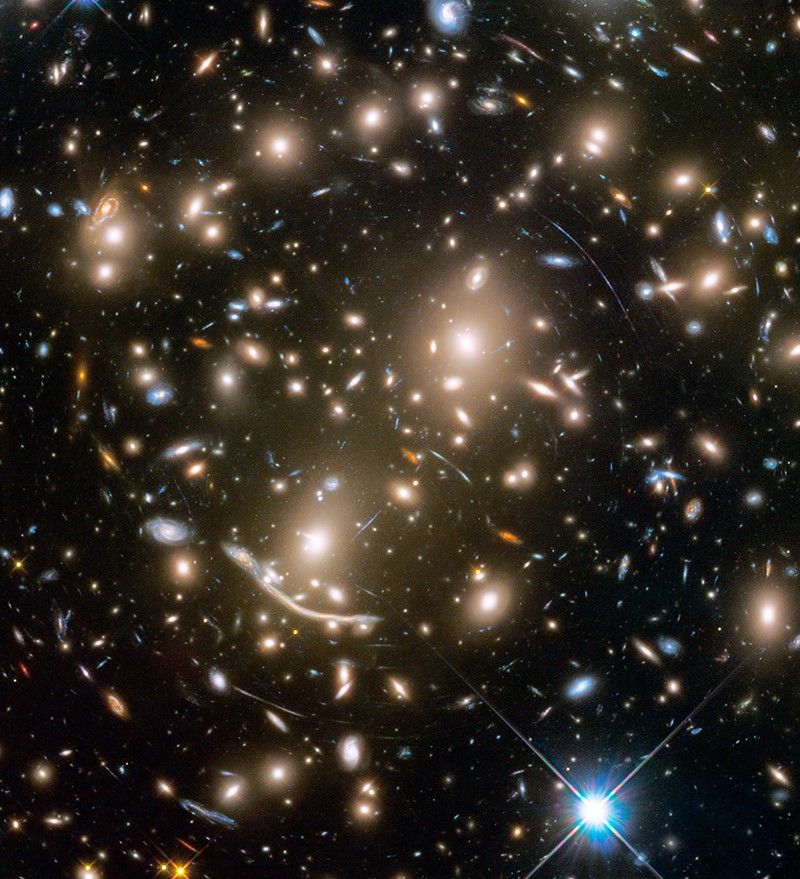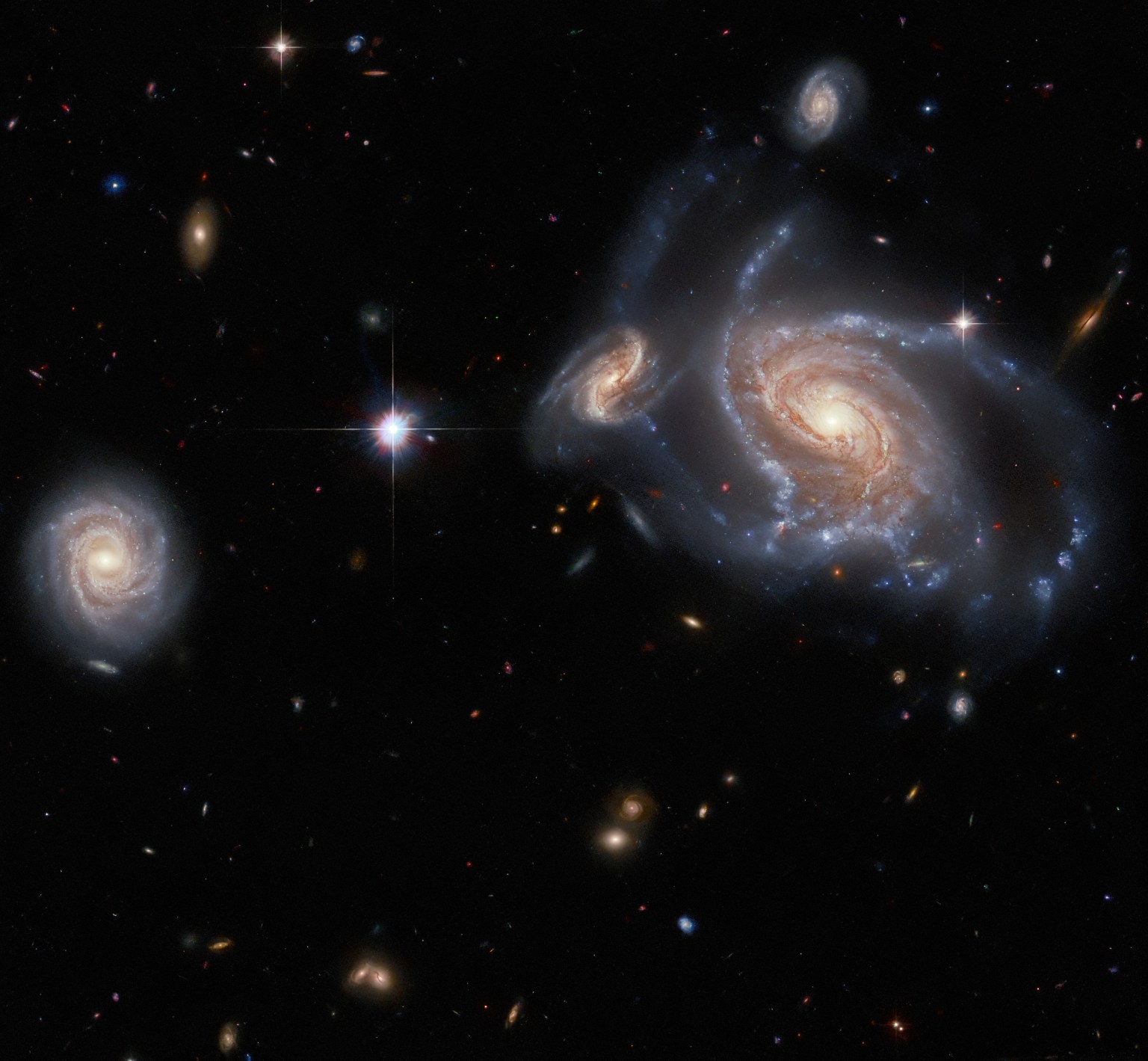The History of Gravitational Lenses
Gravitational lensing occurs when a massive object — such as a galaxy cluster — warps space and time causing light to bend, distort, and magnify as it passes around the massive object. Einstein was one of the first to describe this phenomenon. In his theory of general relativity, Einstein fuses space and time into a single quantity called "spacetime" and describes gravity simply as the curvature of spacetime. The theory charts the path light takes through a gravitational lens as a curve that distorts and magnifies the object’s image, just like a magnifying lens.
British astronomers Arthur Stanley Eddington, Frank Watson Dyson, and Andrew Crommelin proved Einstein's theory in 1919 with an experiment that centered around observing a total solar eclipse to see if the Sun's gravity would bend starlight passing near the Sun during the darkest part of the eclipse. Two expeditions — one to the West African island of Principe, the other to the Brazilian city of Sobral — used a total of three telescopes — two in Sobral and one in Principe — to photograph stars near the Sun during the total solar eclipse of May 29, 1919.
This total solar eclipse provided them with an excellent situation to test Einstein's theory. Because a total solar eclipse blocks out most of the Sun's light, it would allow the team to see stars in the Sun's vicinity, and this eclipse had a particularly long duration of totality (the mid-point and darkest part of the eclipse): nearly seven minutes. It was also in a part of the sky that held a bright, open cluster of stars called the Hyades for them to photograph. They just needed the weather to cooperate.
The sky was mostly clear during totality in Sobral, and the team obtained a total of 20 useful photographic plates. Thick clouds covered the skies over Principe during most of the eclipse, but they did part long enough for researchers to obtain two useful plates to analyze.
The team of astronomers compared their eclipse images with photographs of the same area of sky taken by the same telescopes when the stars were visible at night, months before or after the eclipse. They analyzed the relative position of each star image and looked for changes in scale and orientation between the photographs, eventually announcing their success by saying that the light's path was "discordant by an amount much beyond the limits of accidental error."
Some astronomers questioned the validity of their results, suggesting that their equipment didn't have the sensitivity to detect the degree of bending starlight that the team claimed. Even if that were true, many observations over the years have since confirmed the gravitational deflection predicted by General Relativity.

Gravitational Lensing Today
Today, Hubble astronomers continue to use the century-old General Relativity/Eddington Experiment to measure distant objects in the universe. For the first time, they measured the mass of a lone white dwarf — the dense, burned-out remnant of a Sun-like star — by seeing how much its gravity deflected the light from a background star. The researchers found that the white dwarf, called LAWD 37, is 56 percent the mass of our Sun, which agrees with earlier theoretical predictions of the white dwarf's mass and corroborated current theories of how white dwarfs evolve as the end product of a typical star's evolution.
The Eddington Experiment, and Hubble's more recent white dwarf mass measurements, are examples of gravitational microlensing in which relatively small masses create a lensing effect.

When the mass of the lensing object is much larger, like a large galaxy or cluster of galaxies, the effects of gravitational lensing can resemble a house of mirrors. The gravitational lens not only bends and magnifies the light of distant objects, but distorts it in both space and time.
One example of this spacetime distortion lies in the galaxy cluster 0024+1654, seen above. The gravitational lens forms as a result of the cluster's tremendous gravitational field that bends light to magnify, brighten, and stretches the image of a more distant object. How distorted the image becomes and how many copies are made depends on the alignment between the foreground cluster and the more distant galaxy, which is behind the cluster. In this photograph, light from the distant galaxy bends as it passes through the cluster, dividing the galaxy into five separate images. The light also distorted the galaxy's image from a normal spiral shape into a more arc-shaped object.
Another example of how a gravitational lens acts like a house of mirrors is visible in the galaxy cluster MACS J1149.6+2223 (seen below). This massive cluster holds an elliptical galaxy with a distant galaxy gravitationally lensed around it. The gravitationally lensed galaxy contains a supernova that was lensed four times, forming a four-pointed shape known as an Einstein Cross. MACS J1149.6+2223 and the elliptical galaxy are 5 billion light-years from Earth. The supernova, named Refsdal, is located 9.3 billion light-years away.

Hubble spotted the four images of supernova Refsdal on Nov. 11, 2014. Just one year later, on December 11, 2015, Refsdal appeared in a position predicted by astronomers (see image at right). The light from this appearance took a different path through the massive cluster's gravitational lens, delaying its arrival at Earth. By mapping the gravitational lens and its distortions, astronomers were able to predict where the next appearance of Refsdal would happen.
Hubble's observations of gravitational lenses have not only increased the number of known gravitational lenses, but they have helped astronomers better understand the distribution of the non-luminous stuff of the universe we call dark matter. Most of the matter in galaxy clusters causing the lensing is invisible dark matter, so mapping out the distortions of background light helps astronomers discern where this mysterious matter is distributed within and between galaxies. Knowing the distribution of dark matter helps us better understand the underlying structure of the universe and how it evolves.













































